Signs of the Cast Shadow Master
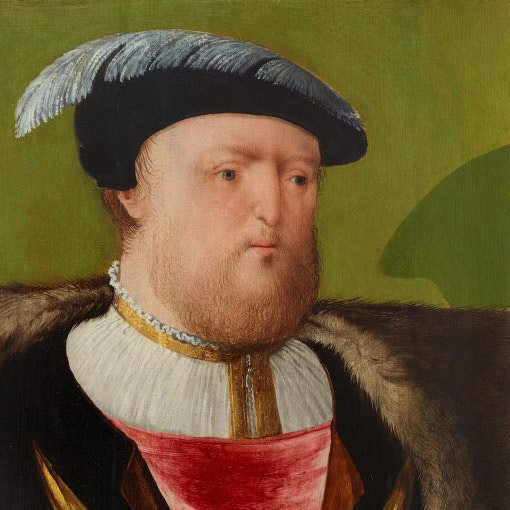
Mystery surrounds the Art Gallery of NSW’s portrait of Henry VIII as we’ve been exploring in recent posts.
To get closer to the truth – and to help us plan its much-needed conservation treatment – we needed to get much, much closer to the painting itself.
We started with conventional imaging techniques – X-radiography, infrared reflectography and ultraviolet fluorescence – undertaken at the Gallery, which suggested there had been damage to the painting. This included a break in the panel through the centre, the addition of an extra panel piece along the right edge and extensive overpainting by previous restorers.
At the University of NSW’s LUXLAB imaging laboratory, the portrait was scanned at 1200 dpi, before and after cleaning, giving a microscopic view of the entire painting surface. This revealed cracks, losses, brush marks and traces of paint invisible to the naked eye, enabling a more precise comparison between our painting and similar ones in London.
We observed the same distinctive ‘dab-and-twist’ technique for the ruff of the shirt collar, characteristic fine decorative and calligraphic brushwork, and some minute marks that could only have been carried out under magnification, indicating the hand of a miniaturist.
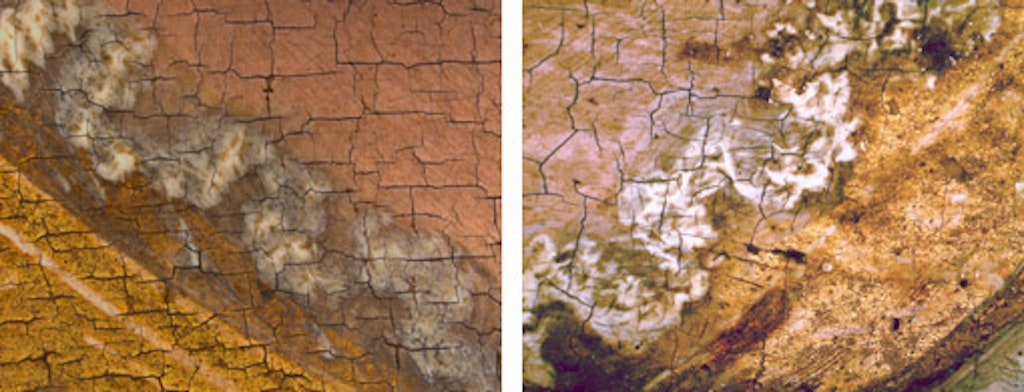
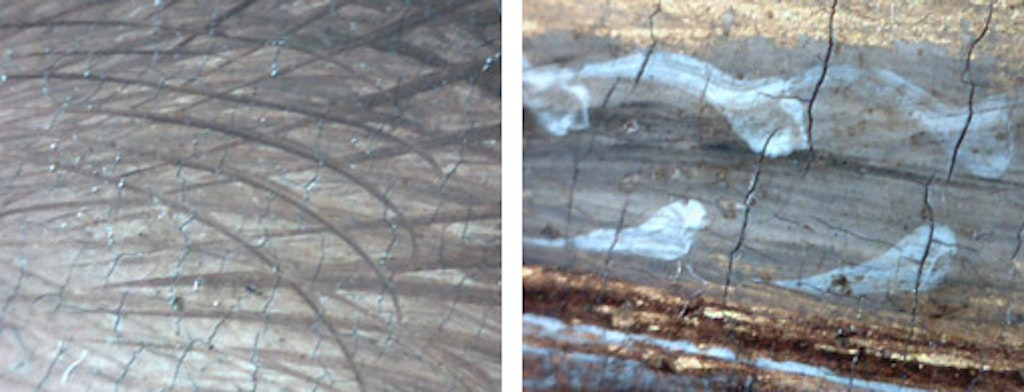
The next stop was the Australian Synchrotron in Melbourne, which produced a series of data-rich maps of our Henry over the course of 23 hours using the X-ray fluorescence microscopy beamline.
Copper, gold, mercury, iron, lead … each element produces a unique fluorescence signal when appropriately illuminated by X-rays, and as these correspond with particular pigments, we now had a picture of the exact location of all the materials comprising the painting.
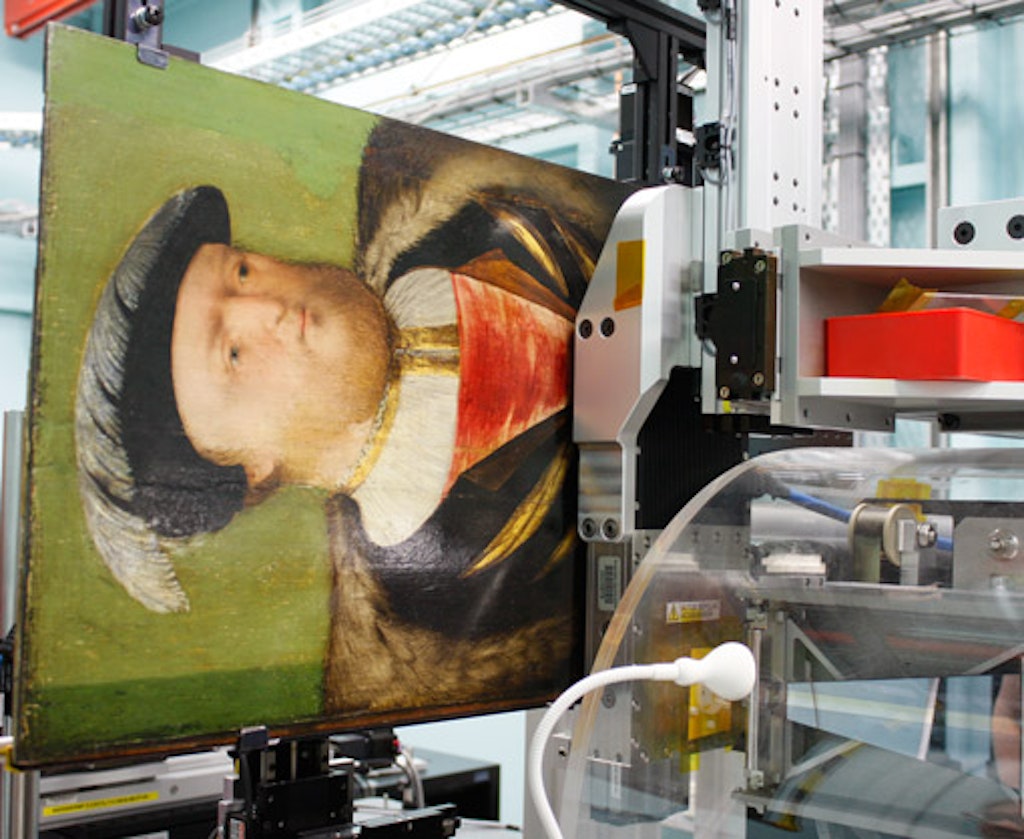
Among the many discoveries was one particularly significant revelation: evidence of the cast shadow that had seemed to be missing from our portrait. This now placed the artwork firmly in the same group of Henry portraits as those in London’s National Portrait Gallery and Society of Antiquaries, which, in the absence of a named artist, had at one time been ascribed to the enigmatically titled Cast Shadow Master, so called because the portraits included a shadow cast by the sitter.
The key to this discovery was in the greens.
We could now distinguish between the original greens (created using a patina that results from mixing vinegar and copper) and a chrome green that must have been added much later (chrome was not discovered until 1800).
In the conservation treatment that followed, the non-original paint was removed, revealing a shadow cast from Henry’s head onto the background to the right – a shadow that was present in all the other portraits of the Tudor group in London.

This also made sense of a dark green strip on the portrait’s left edge, which is intended to suggest a shadow cast by the frame. An illusion is created of a recessed space in which Henry appears to sit, hands resting on a cushion, as though present and looking into the room. The cushion itself, which was painted black, also appeared to have been painted green originally.
For the first time we could see that the sleeve at the lower left appeared to be a slashed sleeve with the white shirt undergarment pulled through the decorative cuts in the upper garment – another shared characteristic of the Henry group to which our painting belongs. This too had been obscured by a restorer’s overpaint, which we subsequently removed.
Gold leaf was visible for the first time in exquisite detail. By zooming in, we can see the fine creases called lamellae, caused by the hammering action when the gold leaf was manufactured, probably by beating out gold coins. The fine sheets have been laid in place by the artist in a technique similar to that used in illuminated manuscripts and in religious icons and European paintings from the 15th century.
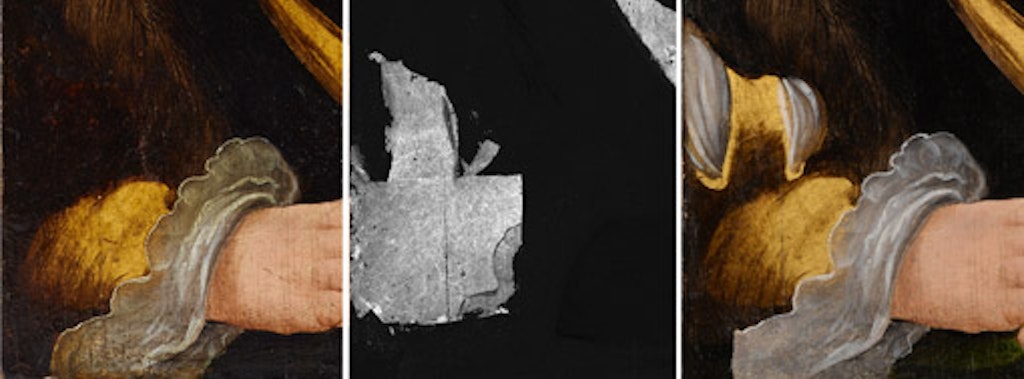
Elsewhere, the mercury map (indicating vermilion, a bright red paint) revealed that one of Henry’s fingers had been straightened during a restoration. This overpainting too has since been removed and the original curved finger can be seen again.

You can explore the elemental maps and other aspects of the project in our slideshow.
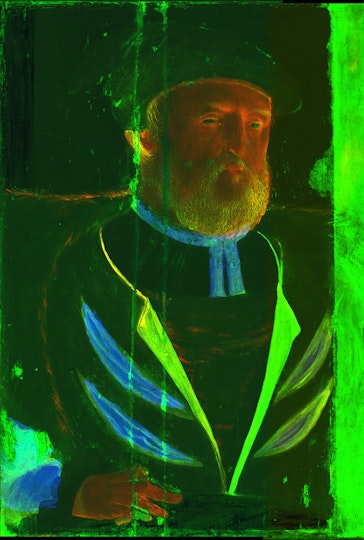
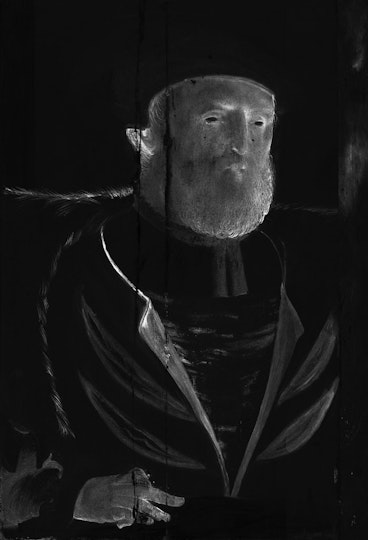
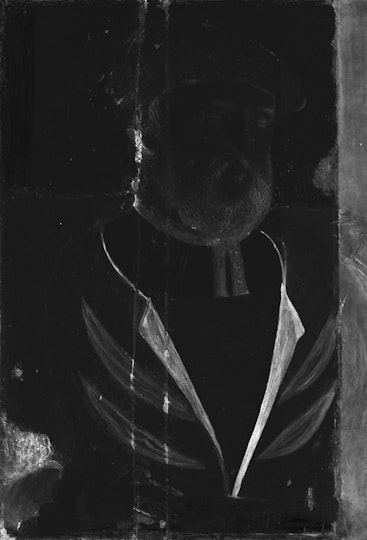
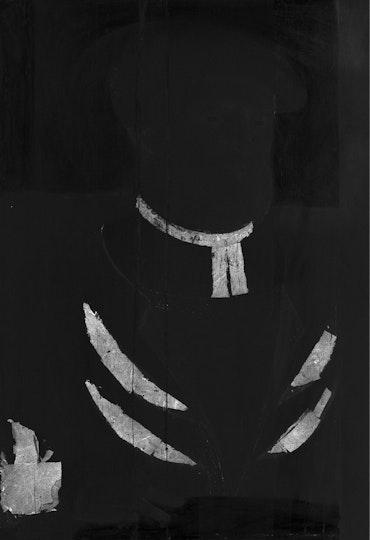
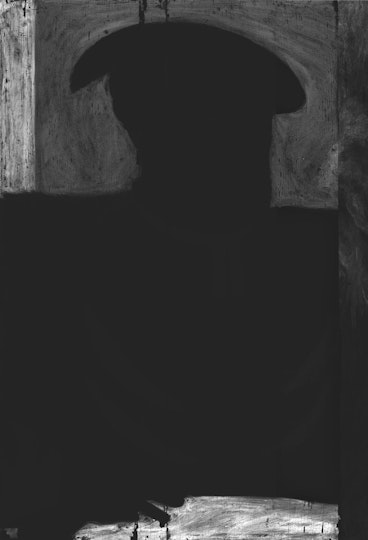
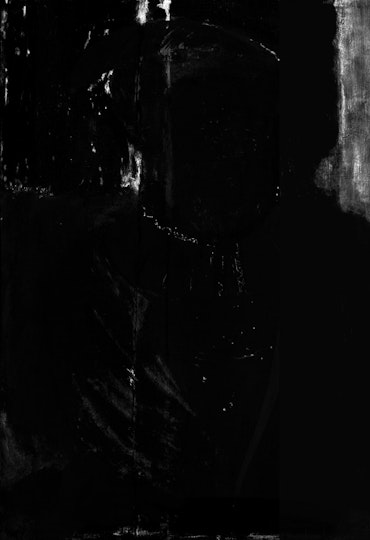
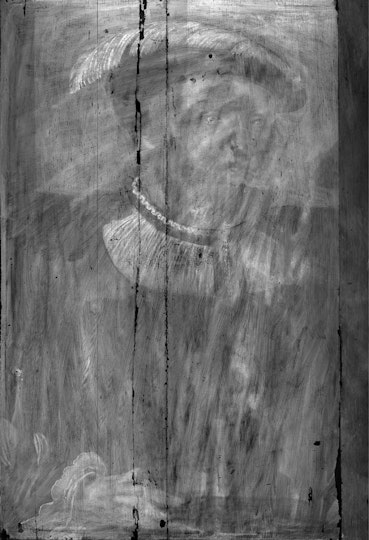
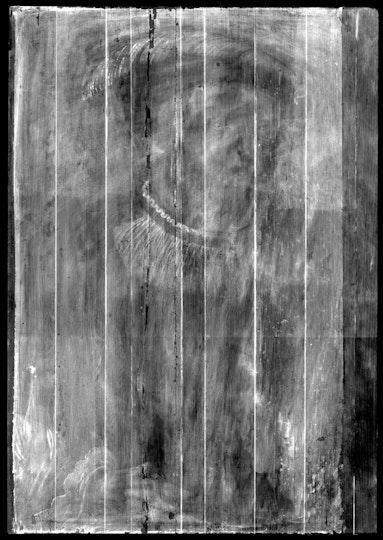
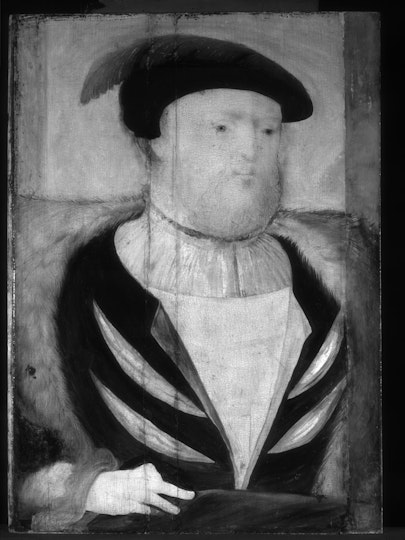
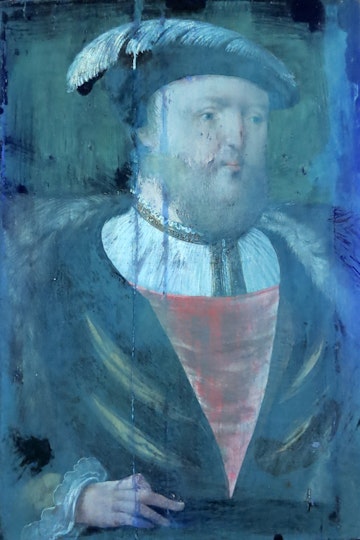
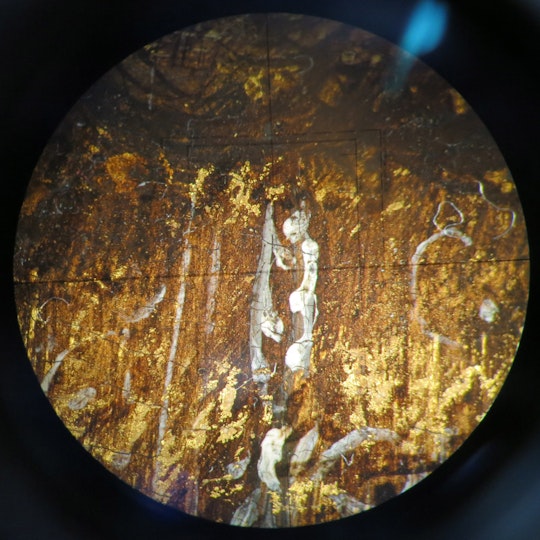
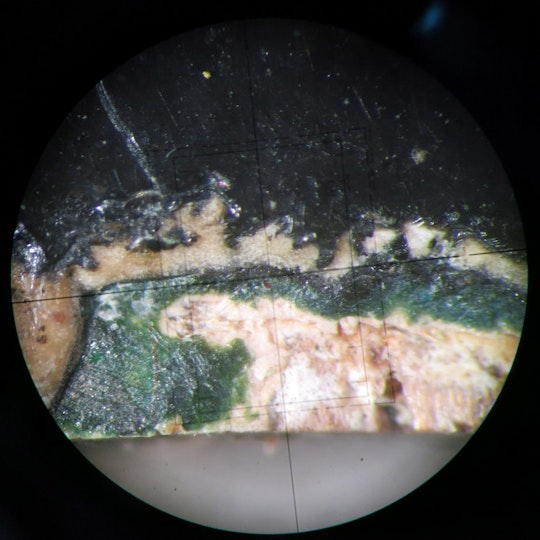
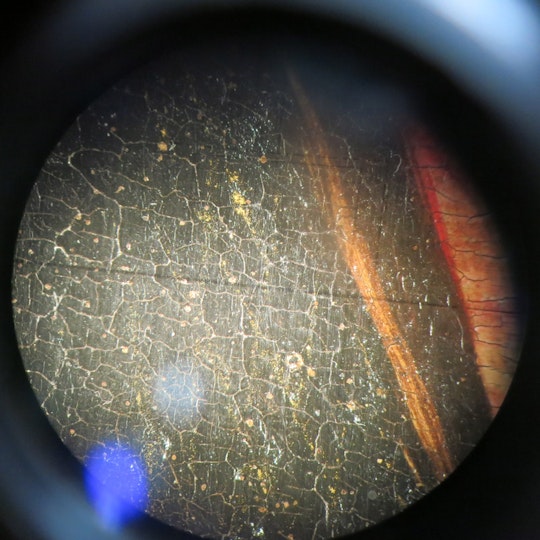
The panel itself was also holding secrets, but to unlock those we needed a dendrochronologist – a story we’ll investigate in our next Henry VIII post.
The Gallery’s Henry VIII portrait is on display from 12 May to 9 September 2018 in Henry VR.
The conservation treatment project that sparked this research was supported by the Conservation Benefactors, most notably Dorothy R Spry (in memory of), Hamish Parker, Leonard Groat and Kenneth Reed AM.